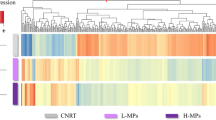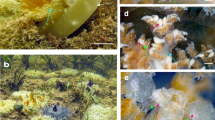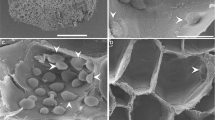Abstract
THE epidermal mucus of fish regulates swimming speed by controlling the hydrodynamic resistance of the skin surface1,2. The mucus is also presumed to serve as a defence against pathogenic organisms and is intimately associated with osmoregulation3,4. Because water-borne lead and mercury accumulate in the epidermal mucus of fish5,6, it is important to ascertain whether this phenomenon produces deleterious alterations in the mucus. No detailed information is, however, available to evaluate whether such alterations occur on exposure of fish to lead and mercury or whether a capability exists to depurate these metals.
This is a preview of subscription content, access via your institution
Access options
Subscribe to this journal
Receive 51 print issues and online access
$199.00 per year
only $3.90 per issue
Buy this article
- Purchase on Springer Link
- Instant access to full article PDF
Prices may be subject to local taxes which are calculated during checkout
Similar content being viewed by others
References
Uskova, Ye. T., Momot, L. N., and Krisal'nyy, V. A., in Dolphin Propulsion Echolocation Research, UDC 599–53, 92–97 (1974).
Rosen, M. W., and Cornford, N. E., Nature, 234, 49–51 (1971).
Harris, J., and Hunt, S., 531st Meeting of Biochem. Soc., 1, 153–155 (1973).
Jakowska, S., Ann. N.Y. Acad. Sci., 106, 458–462 (1963).
Chow, T. J., Patterson, C. C., and Settle, D., Nature, 251, 159–161 (1974).
McKone, C. E., Young, R. G., Bache, C. A., and Lisk, D. J., Environ. Sci. Technol., 5, 1138–1139 (1971).
Roubal, W. T., in Progress in the Chemistry of Fats and Other Lipids (edit. by Holman, R. T.), 13, 61–86 (1972).
Lowry, O. H., Rosebrough, N. J., Farr, A. L., and Randall, R. J., J. biol. Chem., 193, 265 (1951).
Malaiyandi, M., and Barrette, J. P., Analyt. Lett., 3, 579–584 (1970).
Meranger, J. C., and Somers, E., Bull. environ. Contam. Toxicol., 3, 360–365 (1968).
Varanasi, U., Robisch, P. A., and Malins, D. C., Fedn Proc., 34, 635 (1975).
Leppi, T. J., Histochemie, 15, 68–78 (1968).
Author information
Authors and Affiliations
Rights and permissions
About this article
Cite this article
VARANASI, U., ROBISCH, P. & MALINS, D. Structural alterations in fish epidermal mucus produced by water-borne lead and mercury. Nature 258, 431–432 (1975). https://doi.org/10.1038/258431a0
Received:
Accepted:
Issue Date:
DOI: https://doi.org/10.1038/258431a0
Comments
By submitting a comment you agree to abide by our Terms and Community Guidelines. If you find something abusive or that does not comply with our terms or guidelines please flag it as inappropriate.



